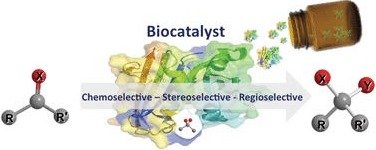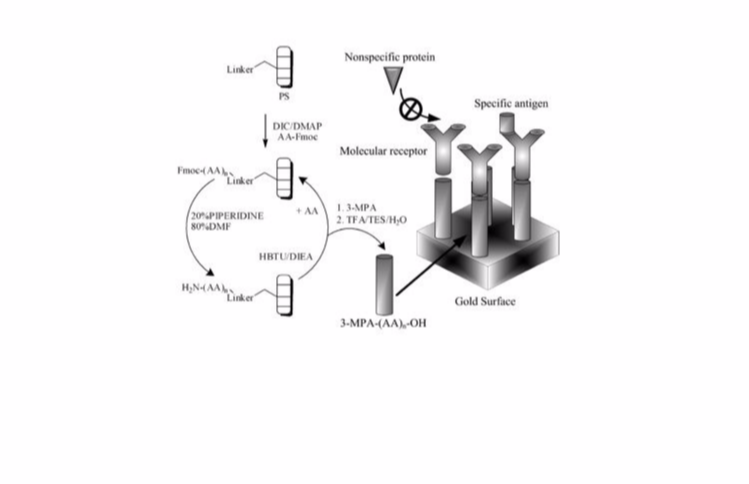
Research interests : Protein Engineering, Biocatalysis, Enzymology, Structural Biology, Molecular Modelling and Protein Dynamics
The complexity of enzyme catalysis, consisting of ligand recognition and exquisite discrimination followed by rapid catalytic turnover, has traditionally been difficult to study. Recent developments in molecular modelling of macromolecules and powerful molecular biological methodologies now offer new approaches for improving our understanding of enzyme structure-function relationships. Our research program combines these methodologies to explore the fundamentals of enzyme catalysis. The benefits of better understanding enzyme catalysis are numerous: we are gaining a better understanding of enzyme-based drug resistances and are modifying enzymes for synthetic applications. Currently, there is a pressing need for development of complementary strategies to provide greater detail about the nature of enzyme-ligand interactions for applications including drug design and biocatalysis. To improve our capacity to modify enzymes for synthetic purposes, we are gaining additional insight into the plasticity of enzyme active sites by distinguishing the elements that are indispensable for function from those that can be altered. We develop and apply methodologies that enhance the speed, power and information-content of the various steps implicated in enzyme engineering.
Team members: Adem H.-Parisien, Megan-Faye Parker
Transglutaminases (TGase) catalyse the formation of crosslinks between proteins or peptides. In humans, the TGase-mediated cross-linking of proteins is implicated in blood clotting, endocytosis, apoptosis and can also lead to physiological disorders such as cataract formation and Celiac disease. It is thus a target for drug design. In a long-standing collaboration with Professor Jeffrey Keillor (Ottawa U.), we generated a model for the binding of small acyl-donor peptide substrates to mammalian tissue transglutaminase toward the development of model substrates and inhibitors (Chica et al. (2004)), and explored the use of non-native substrates (Keillor et al.(2008)). Making use of new assays such as this fluorometric assay for transamidation activity (Gnaccarini et al. (2009)) we discovered potent cinnamoyl inhibitors of mammalian TGase (Pardin et al.(2009); Pardin et al. (2008)).
In a bid to develop its use as a biocatalyst, we also demonstrated site-specific protein propargylation using mammalian tissue transglutaminase (Gnaccarini et al.(2012)). We have more recently turned to microbial transglutaminases (MTG) as a green alternative to amide synthesis. MTG is widely used in the food and textile industries. MTG is tolerant to a broad range of reaction conditions and is therefore suitable for further development as a biocatalyst. We investigated a wide range of non-natural, small-molecule substrates, which were chosen to explore enzyme reactivity and to yield synthetically relevant products. Our results indicate that a variety of amines function as an acceptor substrate, but stricter requirements apply for the donor substrate. Importantly, we demonstrated that MTG can be used to add an alkyne or an azide onto a peptide chain, for ulterior 'Click' reaction (Gundersen et al. (2014)).

Team members: Abdelhadi Djaileb, Megan-Faye Parker, Daniela Quaglia
Biomarkers are specific molecules that correlate with the progression of diseases or with the susceptibility of a disease to a given treatment. They are useful indicators for monitoring the state of progression or the treatment of a particular disease. We are developing protocols for monitoring different cancer-related biomarkers using surface plasmon resonance (SPR). The attachment of a particular protein of interest on gold surface allows for specific detection of protein-protein interaction or binding of a target molecule of interest using SPR. For example the attachment of an antibody on a gold surface allows for the detection of its specific antigen in clinical samples or the attachment of a specific antigen on the surface may allow for monitoring the level of antibody, a useful indicator of the course of treatment of many diseases.
We are developing protocols adaptable to a new portable SPR device designed by Professor Jean-François Masson. We developed and patented different types of surface monolayers preventing non-specific adsorption that allow for SPR detection of specific molecules using crude serum (Ratel et al. (2013); Aubé et al. (2013); Bolduc et al. (2011); Bolduc et al. (2010); Bolduc et al. (2009)). We employ this approach for monitoring methotrexate in clinical samples of cancer patients (Zhao et al. (2012)). We have now developed different new SPR assays for monitoring the evolution of SARS-CoV-2 infections (Djaileb et al. (2021); Hojjat Jodaylami et al. (2021); Djaileb et al. (2023)). We are working on improving the sensitivity of detection by optimizing both the physical and the biological aspects of the SPR system. Our work includes protein engineering and surface chemistry to work out new SPR protocols for improving the accessibility of diagnosis by monitoring the progression, the course of treatment or the screening of different diseases.

Team members: Claudèle Lemay-St-Denis, Stella Cellier-Goetghebeur, Maxime Saint-Aubin, Samy Faraj
The continuously increasing use of trimethoprim as a common antibiotic for medical use and its preventive application in terrestrial and aquatic animal farming has increased its prevalence in the environment. This has been accompanied by increased drug resistance, including through the emergence of an intrinsically TMP resistant type B dihydrofolate reductase (DfrB). DfrB1, also known as R67 dihydrofolate reductase, is the most broadly studied variant. It is imperative to discover inhibitors of this new source of antibiotic resistance, to maintain the efficacy of trimethoprim in treatment of diseases including pneumonia, gonorrhea and adventitious infections in AIDS patients.
We have reported the first specific inhibitors of this emerging drug target, obtained by fragment-based design (Bastien et al. (2012)). We developed a functional screening platform for the identification of selective inhibitors of bacterial trimethoprim resistant enzymes, the DfrB family. The platform is based on semiautomated determination of enzymatic activity in the presence of a variety of fragments, or simple compounds similar to the native ligands of the enzyme, to assess inhibition.
We observed that a variety of small aromatic compounds offer millimolar range inhibition of DfrB1, which is consistent with the proposed “primitive” nature of its relatively promiscuous binding site (Schmitzer et al. (2004)). By those means, small aromatic molecules of 150−250 g/mol (fragments) inhibiting DfrB1 selectively in the low millimolar range were identified. Weakly inhibiting molecules provided the basis for testing compounds of greater complexity, which provided an increase in affinity from millimolar to micromolar. More complex, symmetrical bis-benzimidazoles and a bis-carboxyphenyl procured selective inhibition of the target in the low micromolar range (Ki = 2−4 μM). Molecular docking using our high-resolution crystal structure (Yachnin et al. (2011)) offered insights into the binding mode of these inhibitors. Importantly, we screened the human dihydrofolate reductase in parallel with DfrB1 to identify compounds with the best prospects for selective inhibition. Thus, we identified a new class of selective, symmetrical, and competitive inhibitors of DfrB1. We are currently working on the next generation of DfrB inhibitors.
Team members: Ali Fendri, Jonathan Besna, Douglas Fansher
P450 monooxygenases are heme-containing enzymes used in biocatalysis. In recent years, there has been increasing interest in using P450 enzymes as biocatalysts due to their ability to perform highly selective reactions under mild conditions, reducing the environmental impact of chemical processes. P450 BM3 from Bacillus megaterium hydroxylates various substrates using NADPH and molecular oxygen. Mutations near the heme have expanded its substrate range beyond fatty acids. Colorimetric methods, such as bacterial colony-based assays, accelerate substrate screening. Expanding P450 BM3's substrate range for industrially relevant reactions would improve efficiency and sustainability by reducing reliance on harsh chemical catalysts. This versatile enzyme could be used in pharmaceuticals, agrochemicals, and fine chemicals, providing access to new chemical scaffolds and stereoisomers for high-value products.
Adapting the P450 BM3 enzyme to a flow reactor system could address certain challenges such as costly cofactor dependency, enzyme reusability and uncoupling efficiency. Flow chemistry is the process of performing chemical reactions in a flow reactor, such as a capillary or micro- structured device, then, the residence time determines the reaction time. The reactants are first pumped through a mixing device and then driven into a controlled temperature flow reactor; the technology of the flow chemistry makes it possible to better control the reaction parameters, such as the mixing, concentrations, the temperature or the reaction time. This means that we can take advantage of more productive, selective and cleaner reactions. It is an approach that offers better reaction control and reduces side reactions, therefore radically different from the traditional chemistry of performing reactions in glass vials or Continuous stirred-tank reactors.
Coming soon!
ADRESSE / ADDRESS
Université de Montréal
Département de Chimie
Campus MIL - Local B-6227
1375 Ave.Thérèse-Lavoie-Roux
Montreal, Qc, Canada, H2V 0B3
CONTACT
Phone: +1 (514) 343-2124
Fax: +1 (514) 343-7586
@ : joelle.pelletier@umontreal.ca